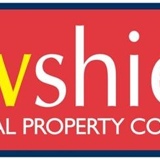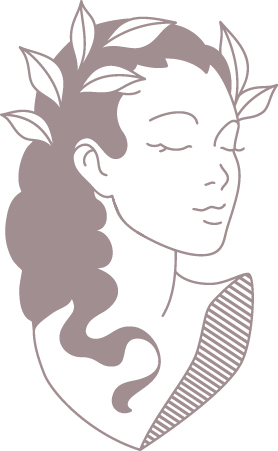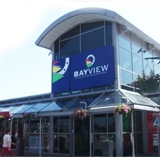Title Page
-
Audit Title
-
Client / Site
-
Customer Name
-
Customer Contact Number
-
Customer E-mail Address
-
Google Satellite Image
-
GPS Coordinates : Location
-
Site Photos
-
Izicash Branch Name
-
Police Station and Case Number
-
Police Investigator name and contact number
1. Customer Site
-
1.1 Name of Customer
-
1.2 Customer Site Address
-
1.3 Customer Site Type
- Current Site (Already serviced)
- New Site (New service)
-
1.4 Service Type
-
1.5 Description of the site.
-
1.6 Description of services.
-
1.7 Current process and routes. (Including escape routes)
2. Loading Area (If not 100%, the Loading Area is not secured)
-
2.1 Perimeter Protection
- Walls - Secure loading bay (brick / concrete)
- Within perimeter fence/wall (with lockable gate/no roof)
- Open Area (Parking)
-
2.2 Access control to the loading area
- No Pedestrian access - only receiving staff
- Delivery/collection service point accessed without having to walk through client areas within client premises or mall
- Pedestrians walking through the loading/unloading area (area within perimeter fence with gate)
-
2.3 Windows Protection
-
2.4 Roof Protection
- Roof (preferably concrete but corrugated iron at very least)
- Normal Roof (No additional Security)
- No Roof
-
2.5 Loading / Unloading
- Cash transfer drum/transfer chutes/security doors into secure vault area
- Loading/Unloading through controlled side- or back door of building not used by clients
- Loading/Unloading done in the open
-
2.6 Delivery / Collection Point
- No Pedestrian access - only receiving staff
- Delivery/collection service point accessed without having to walk through client areas within client premises or mall
- Pedestrians walking through the loading/unloading area (area within perimeter fence with gate)
-
2.7 CCTV inside loading area
- Recordable and monitored CCTV coverage - internal loading bay (and working at time of assessment)
- No CCTV available
-
2.8 History of incidents
3. Health & Safety : Loading Area
-
3.1 Adequate lighting for CCTV and H&S purposes
-
3.2 Vehicle backstop (prevention of crushing incidents)
-
3.3 No Tripping hazards (boxes, etc. lying around)
-
3.4 No Slipping hazards (oil spills, etc.)
-
3.5 No Falling hazards (loose roof beams, iron sheets, light fittings, etc.)
-
3.6 No Exposed electrical wires
-
3.7 No Fire hazards (fuel, oils, etc)
-
3.8 Fire extinguisher/s available
-
3.9 No Sharp/protruding objects that might pose a danger to crews
-
3.10 No Vehicle fumes - adequate ventilation
4. Cross Pavement Movement
-
4.1 Parking Distance from Entrance (Time & Distance)
- Estimated distance from parking spot to premises entrance (0 - 20m)
- Estimated distance from parking spot to premises entrance (20 - 50m)
- Estimated distance from parking spot to premises entrance (50 - 100m)
- Distance from parking spot to premises entrance (100m+)
-
4.2 Attacker Hiding Places (Between CIT Vehicle & Site Entrance)
- No hiding places that attackers can hide behind between the vehicle and the entrance
- A few possible hiding places that attackers can hide behind between the vehicle and the entrance (1 to 3)
- Numerous potential hiding places that attackers can hide behind between the vehicle and the entrance (3+)
-
4.3 Front Door Entrance - Client Volumes (Identification of Potential Attackers)
- Loading/Unloading taking place through front door (clients entering through this door) OR through a back door (not a protected site)- usually a low client flow in front of entrance (1 or 2 occasionally) - easy to identify potential attackers
- Loading/Unloading taking place through front door (clients entering through this door) - usually a medium client flow (3 to 10 on fairly regular basis) - less easy to identify potential attackers
- Loading/Unloading taking place through front door (clients entering through this door) - usually a crowd/que stationary in front of door (10+) - very difficult to identify attackers
-
4.4 Guards
- Armed guard/s at the door helping to give control the crowd and assist in getting access into the building
- Unarmed guard/s at the door helping to give control the crowd and assist in getting access into the building
- No guard/s at the door helping to give control the crowd and assist in getting access into the building
-
4.5 Distance from Entrance to Service Point
- Distance from entrance to service point (0 - 20m)
- Distance from entrance to service point (20 -50m)
- Distance from entrance to service point (50m -100m)
- Distance from entrance to service point (100m+)
-
4.6 Number of Pavement Crossings (Movements)
-
4.7 Time on Site
-
4.8 Front Door Entrance - Client Volumes (Identification of Potential Attackers)
- Usually low number of clients within client site at a time (1 or 2) - easy to identify potential attackers
- Usually 3 to 10 clients on fairly regular basis within client site - less easy to identify potential attackers
- Usually 10+ clients on fairly regular basis within client site - very difficult to identify attackers
5. Health & Safety : Cross Pavement Movement
-
5.1 Adequate lighting for CCTV and H&S purposes
-
5.2 No Tripping hazards (boxes, etc. lying around)
-
5.3 No Falling hazards (loose roof beams, iron sheets, light fittings, etc.)
-
5.4 No Exposed electrical wires
-
5.5 No Sharp/protruding objects that might pose a danger to crews
6. Delivery / Collection Point "Cash Office"
-
6.1 Infrastructure (Walls) "Cash Office"
- Brick/Concrete Walls
- Non-Brick/Non-Concrete Walls (Dry-walls/hardboard/etc)
- Service conducted in the open – No protective walls/barrier
-
6.2 Infrastructure (Type of Doors)
- Solid Ballistic Rated Security Door
- Ordinary Door (with or without steel grill gate)
- No Door
-
6.3 Infrastructure (Access Control)
- Single Person Mantrap Entrance
- Multiple Person Mantrap/Single Door
- No Access Control (no door, etc)
-
6.4 Infrastructure (windows if any)
- No Windows (Walls only)
- Ballistic Windows
- Ordinary window (with or without bars)
- No windows (no walls)
-
6.5 CCTV in Cash Office
- Monitored external CCTV coverage ( for purposes of exit)
- Recordable CCTV coverage - internal coverage of cash office
- No CCTV available
-
6.6 Alarm System
- Panic Alarm linked to Rapid Response Company
- No alarm
-
6.6.1 Alarm monitoring company name, if installed.
-
6.6.2 Description of the alarm system.
7. Health & Safety : Cash Office
-
7.1 Adequate lighting for CCTV and H&S purposes
-
7.2 No Tripping hazards (boxes, etc. lying around)
-
7.3 No Slipping hazards (oil spills, etc.)
-
7.4 No Falling hazards (loose roof beams, iron sheets, light fittings, etc.)
-
7.5 No Exposed electrical wires
-
7.6 No Fire hazards (fuel, oils, etc)
-
7.7 Fire extinguisher/s available
-
7.8 No Sharp/protruding objects that might pose a danger to crews
8. Customer Keys
-
8.1 Who is in control of the customer keys?
-
9. Floor plan with key features (Position of: device, plug, door, steps, counter)
10. Incident Description
-
10.1 Summary of Incident
11. Additional Security Measures
-
11.1 Description of any Additional Security Measures
-
12. Site Risk Rating Standard
- LOW - RISK: Optimal Lighting, Armed Guard, CCTV, Restricted Access, Secure Cash Office/Loading Bay, Panic/Alarm, Safe, Split Key Service, Armed Reaction, Multiple Collections
- MEDIUM RISK: Minimal Lighting, Armed Guard, CCTV, Access, Cash Office/Loading Bay, Alarm, Safe, Split Key Service, Armed Reaction, Single Collection
- HIGH RISK: Poor Lighting, Guard, Alarm, Safe, Customer Control Key, Single Collection
- EXTREME RISK: No Lighting, No Guard, No Alarm, No Safe, No Key, Single Collection
-
12.1 LOW RISK : 85 - 100%
-
12.2 MEDIUM RISK : 70 - 84%
-
12.3 HIGH RISK : 50 - 69%
-
12.4 EXTREME RISK : 0 - 49%
-
13. Any additional info.
-
14. Any additional photos.
-
15. Additional Security Recommendations
-
Survey done by
-
Date Survey finalised
-
Confirmed that Survey content is correct.
-
Date Survey confirmed.
-
Service Accepted
-
Service Not Accepted
-
Service Accepted by
-
16. Comments and Decisions by Operations (Service Accepted)
-
17. Final Recommendations by Risk Department










